The leg press machine is a versatile machine that builds serious leg strength. Unlike free weights, it allows you to move heavier loads with greater safety and stability.
Now, what if we told you that with a few simple adjustments, you can transform the basic leg press into the ultimate glute-growing exercise?
It’s true: the leg press works wonders for building rounded, lifted glutes. You will achieve the buttock of your dreams and address muscle imbalances.
So whether you currently use leg presses just for quads or have never tried them at all, it’s time to harness this exercise for glute gains.
In this guide, you’ll learn pro techniques to recruit more glute fibers with every rep. Discover proper foot placement, adjusted back angles, walkouts, unilateral moves, and advanced tweaks for maximum booty burn.
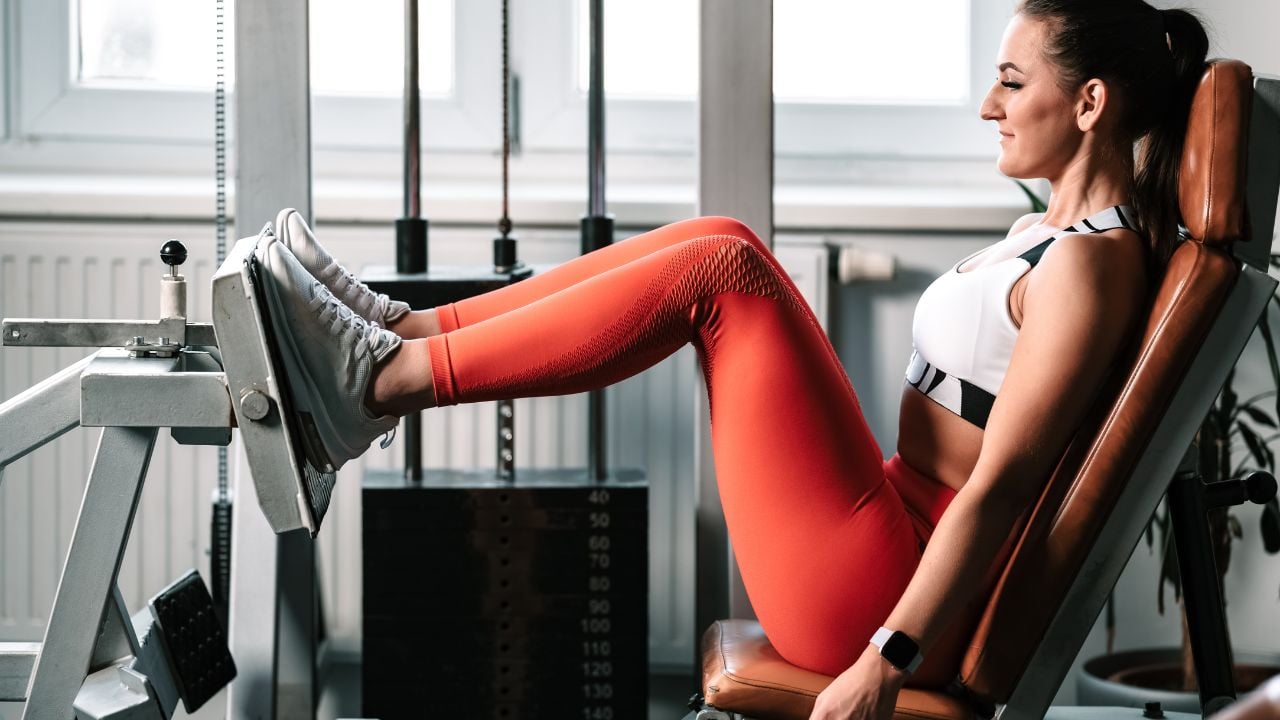
- What is The Leg Press?
- Muscles Worked During Standard Leg Press
- 5 Ways to Do Glute-Focused Leg Press
- 1. High Foot Placement
- 2. Deep Reps
- 3. Point Your Toes Outward
- 4. Wide Stance
- 5. Seated Position
- Leg Press for Glutes Form and Tip
- Seated Leg Press for Glutes
- How To Do It
- Single Leg Press for Glutes
- How to Do It
- FAQs
- Where to Put Feet on Leg Press for Glutes
- Does Leg Press Work Glutes
What is The Leg Press?
The leg press is available in various setups and orientations to meet different needs. Before using a leg press machine, it’s important to understand the biomechanical differences and advantages of each. This ensures you pick the right one for your abilities, injuries, and desired results.
The 45-degree sled press, horizontal press, and vertical press models are the three most common apparatuses for leg press.
- 45-Degree Leg Press: This popular variation features a platform set at a 45-degree angle, with the athlete positioned accordingly. The platform moves downwards towards the seat as the movement progresses. Typically, these machines are plate-loaded for added resistance.
- Horizontal Leg Press: The platform and seat are aligned horizontally in this type. The seat stays upright, and depending on the machine, the seat moves or the platform moves away from you when you press.
- Vertical Leg Press: With the vertical leg press, the athlete lies on your back, and the platform is positioned above you. When you do movement, the platform moves toward you and makes your muscles work harder.
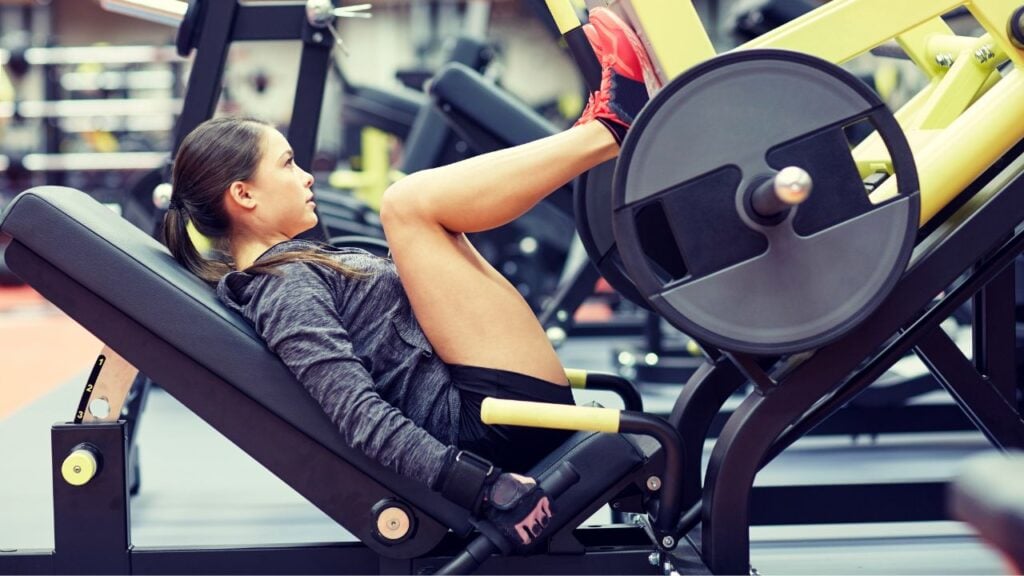
Muscles Worked During Standard Leg Press
The leg press is a versatile exercise that engages multiple muscles in the lower body.
- The leg press primarily targets the quadriceps as you extend your legs against resistance.
- It secondarily works the glutes and hamstrings as they assist in hip extension.
- Stability muscles worked during the leg press are the erector spinae, Core (rectus abdominis, internal and external obliques, transverse abdominis), Calf muscles, and Hip adductors/abductors.

5 Ways to Do Glute-Focused Leg Press
Are you fed up with the traditional leg presses that overstress your quads and neglect your glutes? It’s time to change up your training and work your glutes!
Let’s see how a few simple changes can make regular leg presses the best way to make your glutes grow bigger.
1. High Foot Placement
- Position your feet towards the platform’s top rather than in the middle.
- This adjustment minimizes forward knee travel and increases hip flexion, engaging the glutes more intensely.
- A study has found that the gluteus maximus activity was greater during the high leg press than the variations.

2. Deep Reps
- Perform leg presses with a deeper range of motion to enhance hip flexion and extension.
- Going deeper challenges the glutes to work through a larger range of motion, leading to increased activation.
3. Point Your Toes Outward
- Rotate your legs outward so that your toes point slightly away from your body’s centerline.
- This toe positioning targets the glutes further by aligning with hip external rotation.
4. Wide Stance
- Place your feet a few inches further out from a neutral stance and adopt a wider foot placement on the platform.
- This wider stance replicates hip abduction, stretching the glute muscles during the leg press.
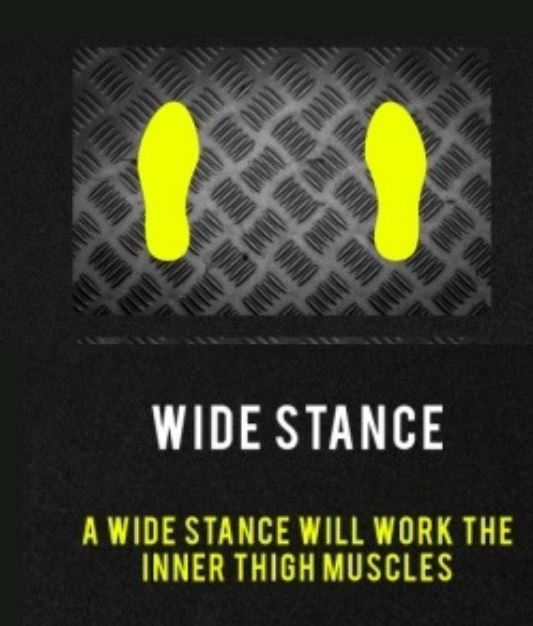
5. Seated Position
- If your machine allows, adjust the seat to its most upright position. This shifts the focus from the quads to the glutes by starting the movement with more hip flexion.
Leg Press for Glutes Form and Tip
- Position feet high on the platform, shoulder-width apart, and slightly turned outward to target glutes effectively.
- Keep your back flat against the seat and avoid arching or rounding.
- Lower the weight until your knees are bent at a 90-degree angle or slightly deeper.
- Focus on driving the weight through your heels, not just your toes. This directly engages your glutes.
- Prioritize hip extension by pushing the platform away from your body using your glutes. Avoid locking out your knees at the top of the movement.
- Brace your core as if you’re about to be punched in the stomach to stabilize your body and prevent hyperextension.
- At the top of each rep, squeeze your glutes hard for an extra activation boost.
- Perform each repetition with a controlled tempo. Emphasize the eccentric (lowering) phase to maximize muscle activation.
- Keep your shoulders relaxed and down; don’t shrug them up towards your ears.
- Inhale as you lower the weight and exhale as you push the weight back up. Maintain steady breathing throughout the exercise.
- Add single-leg presses! Isolating each leg strengthens them individually and challenges your core stability, making your glutes work even harder.
Seated Leg Press for Glutes
While often seen as a quad-focused exercise, the seated leg press can be a fantastic tool for building strong, sculpted glutes with the right approach.
Unlike traditional leg press variations, this seated version provides added support to the lower back.
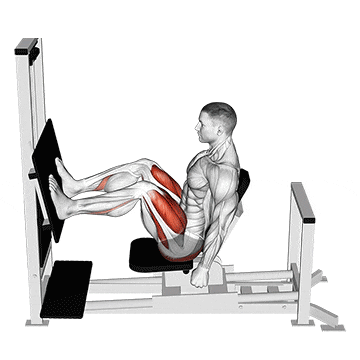
How To Do It
- Adjust the seat position and select an appropriate weight on the leg press machine.
- Sit comfortably with your back firmly pressed against the backrest and feet positioned shoulder-width apart on the footplate.
- Engage your core and push through your heels to extend your legs and move the footplate away from your body or body away from the footplate. (Based on machine design)
- Pause briefly at the top of the movement.
- Then, slowly lower the weight back down.
- Start with moderate weights (70-80% of 1-rep max) and perform 10–12 repetitions for 3–4 sets.
Single Leg Press for Glutes
The single leg press is a unilateral leg exercise that targets the glutes, quadriceps, and hamstrings. Instead of using both legs simultaneously, the single-leg press works each leg separately, allowing you to focus on weak or imbalanced muscles.
One leg press significantly emphasizes the glutes as the primary mover during the exercise.
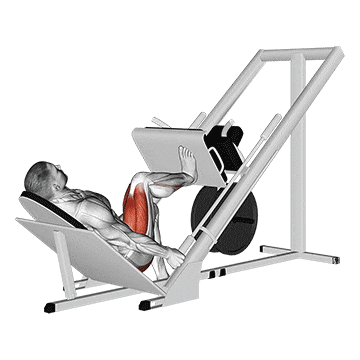
How to Do It
- Adjust the seat height and backrest for comfort and stability.
- Place one foot securely on the platform, toes slightly outward.
- Keep the other leg off the ground, maintaining good posture.
- Hold on to the handles or grips for stability.
- Push the platform away with control, focusing on feeling your glute working.
- Slowly lower the platform back to the starting position.
- Complete the desired repetitions on one leg before switching to the other.
- Ensure equal effort and range of motion on both sides to prevent muscle imbalances.
FAQs
Where to Put Feet on Leg Press for Glutes
For optimal glute activation during leg press, place your feet high on the platform, shoulder-width apart, and slightly turned outward. This position helps target the glutes effectively.
Does Leg Press Work Glutes
Yes, the leg press is an effective exercise for targeting the glutes, especially when performed with proper form and technique. The glutes play a significant role in hip extension, which is a primary movement during the leg press.
By pushing the weighted platform away from the body, the glute muscles are activated to extend the hips, leading to strengthening and toning of the glutes.
Additionally, variations such as high foot placement and single-leg presses can further isolate and engage the glute muscles during the leg press exercise.
References
- Martín-Fuentes I, Oliva-Lozano JM, Muyor JM. Evaluation of the Lower Limb Muscles’ Electromyographic Activity during the Leg Press Exercise and Its Variants: A Systematic Review. Int J Environ Res Public Health. 2020 Jun 27;17(13):4626. doi: 10.3390/ijerph17134626. PMID: 32605065; PMCID: PMC7369968.
- Da Silva EM, Brentano MA, Cadore EL, De Almeida AP, Kruel LF. Analysis of muscle activation during different leg press exercises at submaximum effort levels. J Strength Cond Res. 2008 Jul;22(4):1059-65. doi: 10.1519/JSC.0b013e3181739445. PMID: 18545207.

Manish is a NASM-certified fitness and nutrition coach with over 10 years of experience in weight lifting and fat loss fitness coaching. He specializes in gym-based training and has a lot of knowledge about exercise, lifting technique, biomechanics, and more.
Through “Fit Life Regime,” he generously shares the insights he’s gained over a decade in the field. His goal is to equip others with the knowledge to start their own fitness journey.
